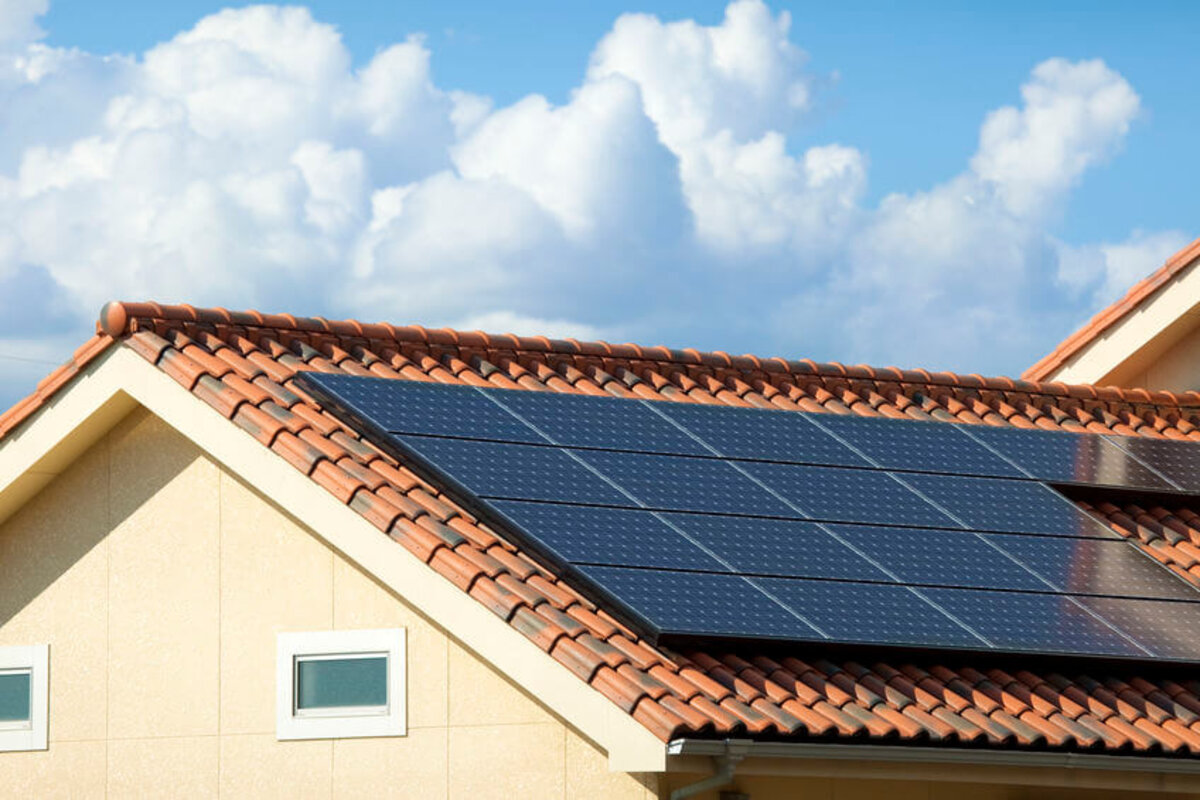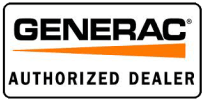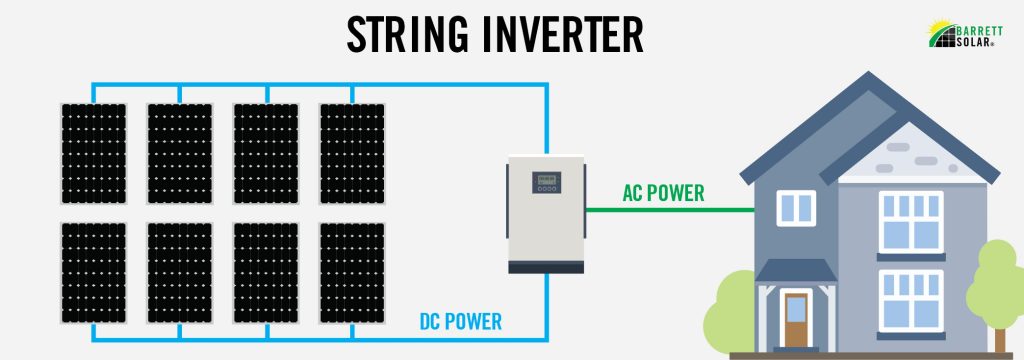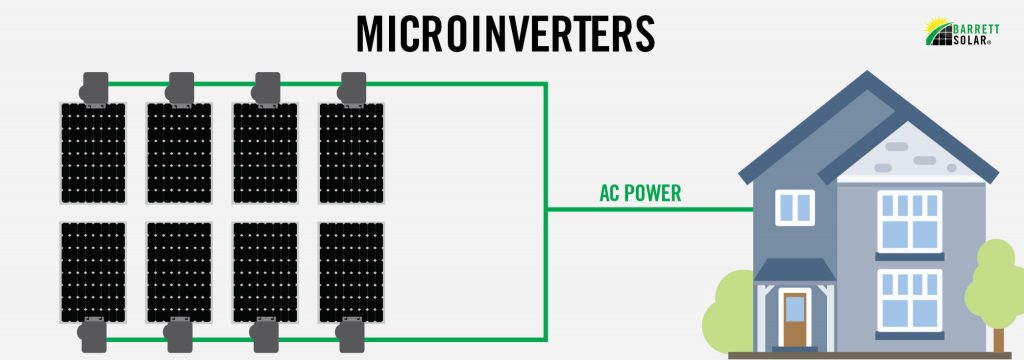







All solar inverters accomplish the same task of converting DC electricity into AC electricity, however, there are several different types of solar inverters available to you. Each of the three types we will cover below function slightly differently and have unique pros and cons.
Commonly thought of as a standard option, a string inverter is a simplistic central inverter that takes the combined DC power from a string of panels and inverts it to AC electricity. Say you have an array of 20 solar panels on your roof. With a string inverter all of your panels will be wired together and the total electricity they produce will be fed to a central string inverter normally mounted to an exterior or interior wall of your home or building. The string inverter does its job, inverts the DC electricity to AC electricity and then feeds this usable power into your existing electrical system.
Pros: String Inverters are the lowest cost solution, and are pretty easy to maintain as you can access them easily.
Cons: A reduction in the performance of one solar panel from shading or other impediment can impact the output of all the panels wired together in a string. Think of a string of Christmas lights. If one light goes out all other lights on that string are affected. Same concept here with String inverters. Also consider, Inverting all your power in one place leaves a single point of failure for the entire system. If your string inverter goes down you will not be producing power.
Best Applications: Solar Panel systems that receive consistent sunlight throughout the day or owners looking for lower cost solar systems


Unlike the central design of a string inverter, Micro inverters are distributed inverters. Solar panel systems with microinverters will have a small micro-inverter mounted behind each individual solar panel in a system. This allows the DC electricity produced by your panels to be inverted to AC electricity right at the panel. The electricity from each microinverter is then combined and fed down into a combiner panel mounted to an exterior or interior wall of your home or building.
Pros: Independently inverting the electricity of each panel increases the performance of your system. A drop in performance in one panel does not affect the performance of another panel. This also allows for panel level monitoring so issues with an individual panel’s performance are easily identified. You also eliminate a central point of failure with your system. Multiple microinverters can go down and the rest of your system will continue to produce power.
Cons: Microinverters cost more than string inverters, and access to service is more difficult because of their location behind your panels normally on a roof.
Best Applications: Systems that have multiple arrays facing different directions or that experience shade from obstructions like trees or nearby buildings and for owners that want to maximize their system’s performance.
You can think of power optimizers as a compromise between string inverters and microinverters. A power optimizer system will have a central inverter, just like a string inverter, but will have added power optimizers installed with each solar panel. The power optimizers do not invert electricity but rather isolate and condition the DC electricity by fixing the voltage of the electricity which is then sent down to the central inverter normally mounted to an exterior or interior wall of your home or building.
Pros: A power optimizer system is more efficient than a string inverter alone and tends to cost less than a microinverter system. By optimizing each panel, a drop in performance of one panel will not affect the performance of another panel and you can monitor the individual performance of each panel.
Cons: Power optimizers are an added expense from a standard string inverter and like microinverters access to service is more difficult because of their location behind your panels normally on a roof.
Best Applications: Owners that would like a step up in performance and monitoring from a string inverter but don’t want to invest in microinverters.
Choosing the best solar inverter for you
Now that you understand how solar inverters work, you may find it easier to select the best option for your application. Ultimately there is no right or wrong choice, simply what works best for each unique installation. Here at Barrett Solar we can help you make the right choice when deciding which inverter is best for you. Generally we install far more micro inverters than anything else on residential projects and we only install string inverters for large commercial projects.

Get answers to your most common questions from Barrett Solar
Solar inverters usually last between 10-25 years depending on what brand you go with. Typically a string inverter needs to be replaced at least once over a system’s lifetime whereas the most popular microinverters are guaranteed for 25 years.
Solar Incentives & rebates are available – Solar rebates and incentives vary depending on where you live. In Kansas and Missouri, the largest incentive available is the 26% federal investment tax credit (ITC) which allows you to deduct 26% of the cost of your solar energy system from your taxes. Certain municipalities and utilities also offer cash rebates and other incentives. If you are a business in a rural area or a farmer, the USDA offers grants as well.
Equipment with Performance and Durability in Mind. Barrett Solar Uses the Highest Quality Equipment Available, All Backed with Industry-Leading Warranties. You’ll Have Peace of Mind Knowing That Your Solar Investment Is Covered For Years To Come.
We are fully transparent, easy to deal with, offer great communications throughout the installation process and we delivery high quality equipment at the lowest prices!

4 Simple Steps to Owning Your Own Energy
Everything we do is designed to improve the customer’s experience with us. We have simplified the process for a homeowner/business owner to obtain a solar proposal. In most cases we can provide a quote digitally or over the phone!
STEP 1
Don’t waste another day renting your power. Call or email us now.
STEP 2
We provide free quotes for all our solar panel installations!
STEP 3
Don’t waste another day renting your power. Call or email us now.
STEP 4
Stop renting your power, start owning it!
200 NE Missouri Road STE 200
Lees Summit MO, 64086
(816) 584-4758